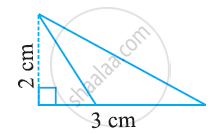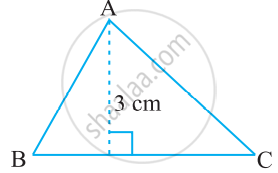Advertisements
Advertisements
Question
If the points A (x, y), B (3, 6) and C (−3, 4) are collinear, show that x − 3y + 15 = 0.
Solution
If the given points A (x, y), B (3, 6) and C (−3, 4) are collinear, then
Area of the triangle ΔABC = 0
`therefore 1/2 [x_1(y_2-y_3)+x_2(y_3-y_3)+x_3(y_1-y_2)]=0`
`rArrx(6-4)+3(4-y)+(-3)(y-6)=0`
`rArr2x+12-3y-3y+18=0`
`rArr2x-6y+30=0`
`rArr2(x-3y+15)=0`
`rArrx-3y+15=0`
APPEARS IN
RELATED QUESTIONS
Find the values of k for which the points A(k + 1, 2k), B(3k, 2k + 3) and (5k – 1, 5k) are collinear.
Find the area of the triangle whose vertices are: (–5, –1), (3, –5), (5, 2)
The class X students of a secondary school in Krishinagar have been allotted a rectangular plot of land for their gardening activity. Saplings of Gulmohar are planted on the boundary at a distance of 1 m from each other. There is a triangular grassy lawn in the plot as shown in the following figure. The students are to sow seeds of flowering plants on the remaining area of the plot.

(i) Taking A as origin, find the coordinates of the vertices of the triangle.
(ii) What will be the coordinates of the vertices of Δ PQR if C is the origin?
Also calculate the areas of the triangles in these cases. What do you observe?
Find the area of the following triangle:

Prove that the points A(2, 4), b(2, 6) and (2 +`sqrt(3)` ,5) are the vertices of an equilateral triangle
Show that the following points are collinear:
A(8,1), B(3, -4) and C(2, -5)
Find the value of x for which points A(x, 2), B(-3, -4) and C(7, -5) are collinear.
Using determinants, find the values of k, if the area of triangle with vertices (–2, 0), (0, 4) and (0, k) is 4 square units.
Find BC, if the area of the triangle ABC is 36 cm2 and the height AD is 3 cm.

Triangles having the same base have equal area.
